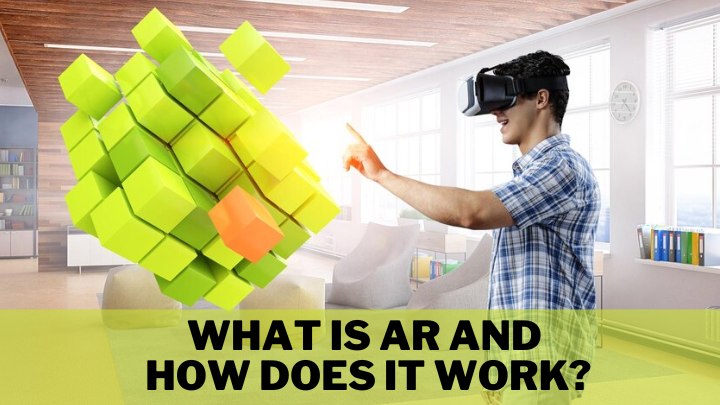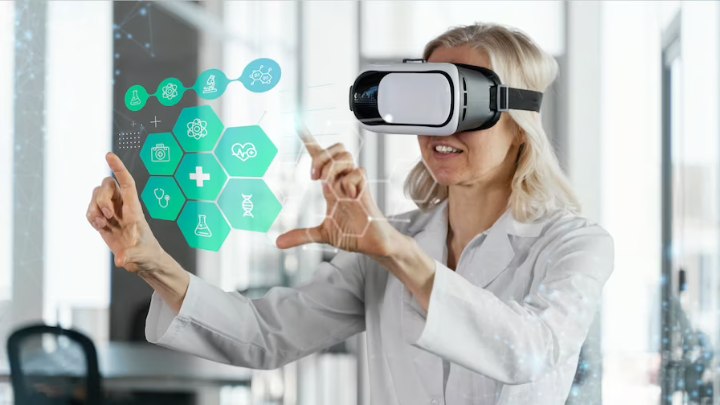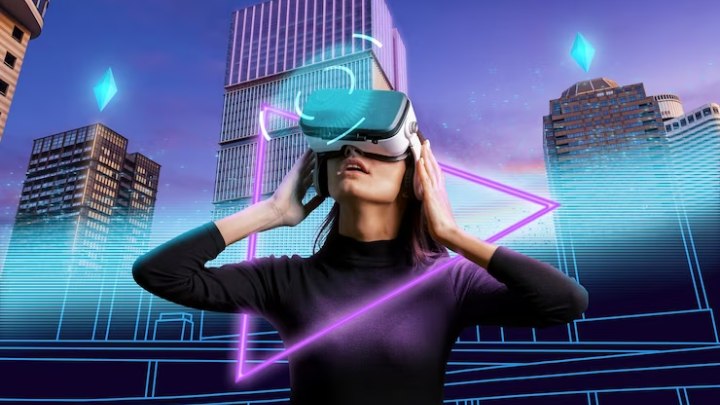
AR (Augmented Reality) has taken the world by storm and is being used in various applications, from gaming and entertainment to education and healthcare. But what is AR and how does Augmented Reality work in actullay?
In this blog article and detailed case study guide, we’ll explore the key components, the AR experience, the AR development process, the different types of augmented reality, and the exciting future developments in AR.
What are the key components of Augmented Reality?
The idea behind augmented reality is to superimpose virtual objects onto the real world, making them appear as part of the physical environment. This is achieved through cameras, sensors, and projection systems, which work together to create the AR experience.
The technology behind AR is complex and involves several key components that work together to create an immersive experience. To answer ‘how does augmented reality work?’, it’s essential to understand the critical elements of AR technology. These include hardware, software, and content.
1. Hardware
The hardware component of AR includes the devices that run AR apps, such as smartphones, smart glasses, and head-mounted displays. These devices use cameras, sensors, and projection systems to gather and process information about the natural world and display digital data in the user’s field of view.
2. Software
The software component of AR includes the AR apps, frameworks, and platforms that enable the development and deployment of AR experiences. AR apps use computer vision, image recognition, and machine learning algorithms to interpret real-world information and superimpose digital information.
3. Content
The content component of AR refers to the digital information overlaid in the real world, such as images, videos, 3D models, and animations. AR content can be static or dynamic and can be created using various tools and platforms.
Now that we understand AR’s critical components let’s look at how AR works in practice and the process of creating AR experiences.
The AR experience
Augmented reality creates an experience that blends the physical and virtual realms. When you use an AR device, you see the real-world environment with virtual objects superimposed onto it. The AR experience is made possible through cameras, sensors, and projection systems, which work together to create an immersive experience.

The AR experience can be interactive, allowing users to interact with virtual objects in real time. This can include simple actions, such as tapping on an object, to more complex interactions, such as manipulating things with hand gestures. Such technology application of immersive experience can be pivotal for success of your business.
AR development process
Creating an augmented reality experience involves a multi-disciplinary approach involving designers, developers, and content creators. The AR development process typically includes the following steps:
1. Conceptualization
The first step in the AR development process is conceptualizing the AR experience. This involves understanding the target audience, defining the goals of the AR application, and envisioning the overall user experience.
The development team works together to identify the key features and functions of the AR experience and to create a clear concept of what the AR application will look like. This step is critical in determining the AR application’s success and helps guide the development process.
2. Design
The design phase is the next step in the AR development process. This involves creating the look and feel of the virtual objects and the user interface. Designers work with the development team to create 3D models of virtual objects, determine the colors and textures, and make the overall visual aesthetic.
The design of the user interface is also an important consideration, as it must be intuitive and user-friendly. A well-designed AR experience will help ensure the AR application’s success.
3. Development
The AR development process then moves into the development phase. This involves bringing the AR experience to life through hardware, software, and content. The development team works to integrate the cameras, sensors, and projection systems and to program the AR system. They also create virtual objects and user interfaces, ensuring that the AR experience is functional and visually appealing.
The development phase is the longest and most complex part of the AR development process, but it is also the most rewarding as the AR experience takes shape.
4. Testing and refinement
The final step in the AR development process is testing and refinement. This involves thoroughly testing the AR experience to ensure that it works as intended and meets the goals of the AR application. The development team also works to refine the AR experience, improving the hardware, software, and content to create a seamless and enjoyable user experience.
This stage is critical in ensuring the quality and reliability of the AR experience and helps to prepare the AR application for launch.

Types of Augmented Reality
Let’s take a look at the different kinds of augmented reality and the unique features of each.
1. Marker-based AR
In the real world, marker-based AR uses image recognition technology to detect specific markers, such as QR codes. When the marker is detected, the AR app superimposes digital information on the marker, creating an AR experience.
2. Location-based AR
AR uses GPS, accelerometers, and other sensors to determine the user’s location in the real world. The AR app then superimposes digital information relevant to the user’s location, creating an AR experience.
3. Projection-based AR
Projection-based AR uses projection systems to display digital information on physical surfaces, such as walls and tables. The user can interact with the digital data using touch or other inputs, creating an AR experience.
Exciting future developments in AR
As the field of augmented reality continues to evolve, new technologies and advancements are constantly being made. This leads to exciting potential improvements in AR, and the question of “how does augmented reality work” is becoming more and more relevant. Some of the most promising future developments in AR include:
- Improved AR hardware: AR devices are becoming more advanced, with better cameras, sensors, and projection systems. This allows for more immersive AR experiences, with higher levels of detail and more realistic virtual objects.
- Greater interactivity: The interactivity of AR is also improving with new technologies such as hand-tracking and eye-tracking. This allows for more natural and intuitive ways of interacting with virtual objects in the real-world environment.
- Integration with 5G Networks: AR with 5G networks will enable AR devices to connect to the internet in real time, allowing for more dynamic AR experiences.
- AR cloud: The development of the AR cloud will allow for persistent AR experiences, where virtual objects can be shared and interacted with by multiple users in real time.
- Increased use in practical applications: AR is also being used in many practical applications, such as in education, healthcare, and the workplace. As AR technology continues to improve, its use in these areas will likely grow.
Key takeaways
As the field of AR continues to evolve, we can expect to see exciting future developments, such as improved hardware, greater interactivity, integration with 5G networks, the AR cloud, and increased use in practical applications. The potential for AR is virtually limitless, and the future of AR is sure to be exciting.
The question “how does augmented reality work” is becoming more and more relevant as AR becomes more integrated into our daily lives. If you are considering integrating AR into your workflow, PlugXR is the best platform to begin with owing to the platform’s ease of use, no-code features and other powerful features & integrations.
